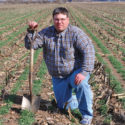Advertise Follow Us
Items Tagged with 'sunn hemp'
ARTICLES
Indiana father-son no-till team seek to balance productive yields with profitability.
Read More
Diversity, Technology Boost Fertility Use, Crop Performance
Working in the Lake Erie watershed with heavy clay soils, no-tillers Les and Jerry Seiler are increasing productivity with their dedication to no-till, crop diversity and precision technology.
Read More
Looking For Ways To Boost Soluble Calcium In Soils
Applying gypsum with a polymer could make more of this major nutrient available to plants and boost yields, but more investigation is needed.
Read More
Cover Crops Power No-Till Payoff
From conservation to higher yields to reduced fertilizer and herbicide use, cover crops brought an immediate payback for Jacob Farms.
Read More
Mixes Boost The Power Of Cover Crops
Here are tips and steps for no-tillers looking to plant and reap the benefits of multi-species cover crop mixes.
Read More
New, Recycled Cover Crops Showing Plenty of Potential
Add more diversity and numerous soil-building benefits to no-till with these up-and-coming options.
Read More










